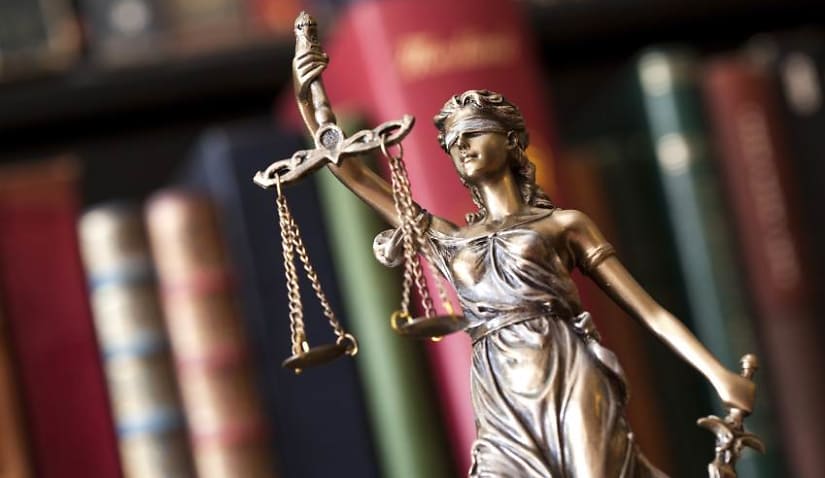Following the release of gender pay gap data from the Workplace Gender Equality Agency and International Women’s Day, female barristers have advocated for continued equitable briefing efforts.

Late last year, data from the Law Council of Australia’s 2022–2023 Equitable Briefing Policy Annual Report showed that while targets were being met in terms of briefing rates, the value of briefs to women barristers was not improving – in fact, it had gone backwards.
However, what was most significant about these figures, he reflected, “is that throughout the seven years we have been collecting data, the value of brief fees to women barristers, while up from 2016, has never matched the briefing rate”.
“For example, in the 2021–22 year, briefing rates were 30 per cent, but the value of brief fees to women barristers was 26 per cent,” he said.
Last year, the value of brief fees dropped compared to 2021–22 and was just 20 per cent. This made the percentage of brief fees going to women barristers “the lowest in four years”, Murphy noted.
“Feedback suggests potential reasons for the discrepancy between briefing rates and fees include the types of clients, calibres of briefs, and areas of work more commonly offered to women. These structural issues of gender inequality will require further examination and effort to address,” he explained.
Despite female solicitors continuing to outnumber their male counterparts and dominating in every area of the legal profession, men still make up the majority of leaders within the profession as the ever-pervasive pay gap continues to exist within the legal industry,
In fact, according to the 2023–24 Legal Firm of Choice Survey, conducted by Agile Market Intelligence in conjunction with Lawyers Weekly, women lawyers are significantly more likely to see the existence of a gender pay gap in the profession than men.
Barrister Arna Delle-Vergini said that as law is still a traditionally male-dominated profession, the gender pay gap is a “tax women pay for having the temerity to participate in the workforce”.
“It’s no surprise to me women are being relegated to the junior, less well-paid briefs the blokes don’t want to do and must work twice as hard to make similar money. Nor is it surprising briefing rates for senior female barristers are lower than that of their younger counterparts. These patterns reflect societal attitudes to women in general. The women who do get an opportunity to play with the ‘big boys’ are held forward as being proof that we are facing an individual rather than a systemic problem,” she said.
“But even they are expected to be eternally grateful for being invited to the party in the first place. Quotas, targets, and box ticking won’t solve the problem. If they could, we wouldn’t be going backwards. When we place a lower value on women generally, they are taxed – whether it’s the gender pay gap, the gender pain gap, [or] the motherhood tax – women will continue to pay the price for not being men until, collectively, they are valued equally.”
Barrister and Australian Women Lawyers (AWL) president Astrid Haban-Beer agreed with this notion – and added that AWL would support a “more ambitious” equitable briefing target.
“In Victoria, panel firms who provide legal services to government now have a target of 50 per cent of briefs and 50 per cent of value of briefs to go to women. The Commonwealth government legal services target is 30 per cent by number of briefs. ‘Private’ work is not measured unless through internal monitoring and voluntary reporting to the Law Council. Measuring the value of briefs that go to women keeps firms accountable so that equitable briefing numbers are not skewed by one metric alone. As a profession, if we want the gender pay gap to improve, the targets must be higher and they must involve the value of briefs,” she explained.
“Overall, there is progress in gender equality at the Bar, but when you look at the subset of existing data, there is stagnation, especially at senior levels. AWL believes that equitable briefing is an issue for the whole profession – law firms and government agencies can see where the higher-value briefs are going and to whom. Barristers themselves don’t often have a lot of transparency when it comes to brief fees because fees tend to be opaque. Barristers’ clerks can also assist with providing market rates commensurate with experience, and they need to be part of the equitable briefing conversation.”
Carolina Soto, barrister with Black Chambers, said an advocacy workshop she recently ran was filled with women, making it “the opposite of my tertiary learning experience some 20 years ago when I was one of a few females in a law class at my university”.
“The next step is, invariably, to ask why those statistics aren’t being seen at the Bar (at that same or similar rate as female lawyers) and think about what we can do to encourage more women to join the Bar (including women from diverse backgrounds), and, more importantly, retaining female barristers in the long term,” Soto said.
Soto said that while it is good to see an increase towards an equitable briefing of women, she is “particularly interested” in seeing this broaden to include women with disabilities and those from culturally and linguistically diverse backgrounds.

Lauren is the commercial content writer within Momentum Media’s professional services suite, including Lawyers Weekly, Accountants Daily and HR Leader, focusing primarily on commercial and client content, features and ebooks. Prior to joining Lawyers Weekly, she worked as a trade journalist for media and travel industry publications. Born in England, Lauren enjoys trying new bars and restaurants, attending music festivals and travelling.